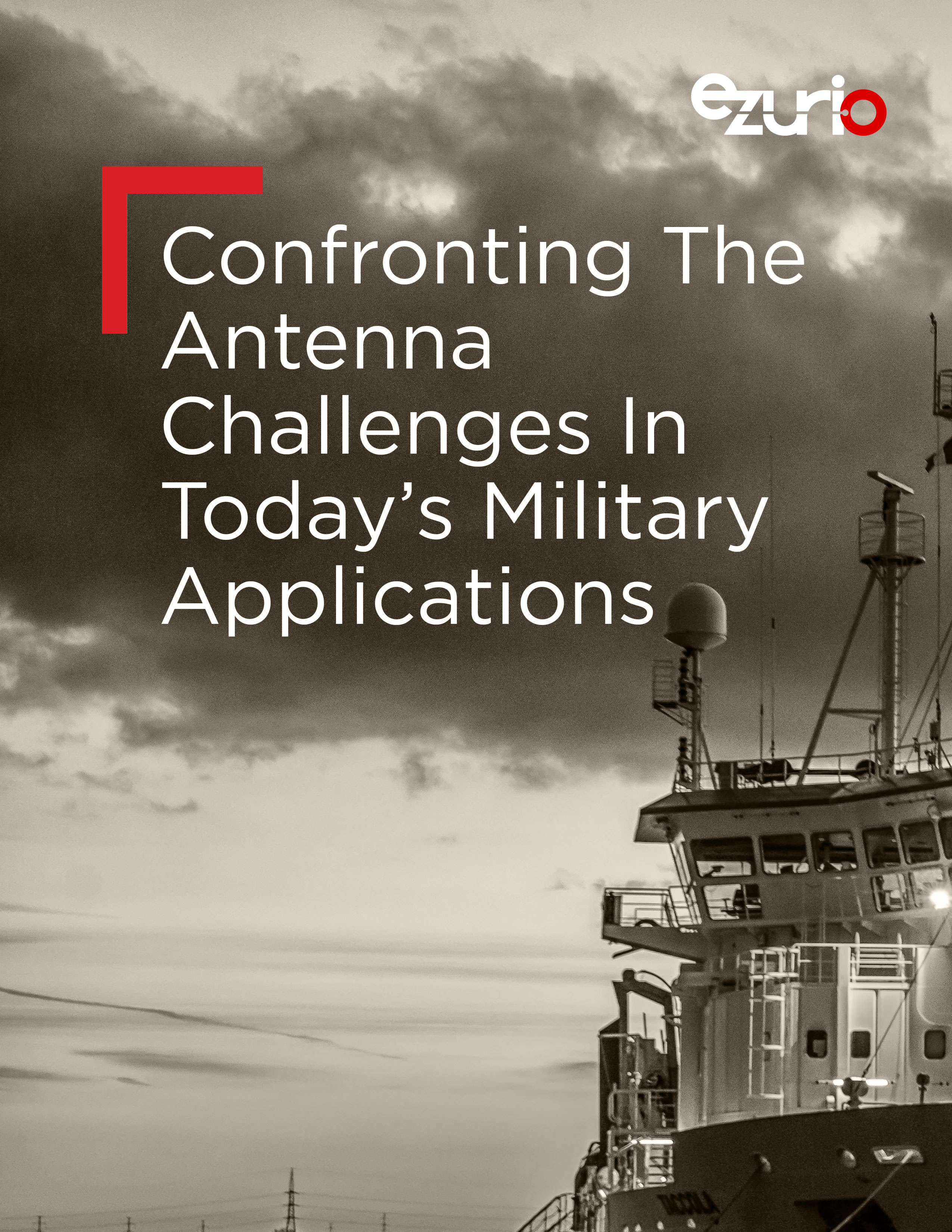Understanding The Challenges
The four main challenges that engineers designing antennas for modern military applications now face are:
Directionality
One of the greatest challenges in antenna design today is directionality (e.g., the ability to tune out all other antennas). To better understand the magnitude of this challenge, consider the example of radar systems which are widely used for “find and track” missions on a variety of Air Force platforms. The radar antenna transmits electromagnetic energy at a target and then receives the returning radar signature. The return from a moving target provides the target's range, heading and velocity.
Here, the antenna is critical to radar system performance and therefore must be properly designed. It must radiate a high concentration of energy within a very narrow angular field of view (e.g., a highly directional beam of energy) and be much larger than the RF wavelength. As the beam becomes more directional though, the size of the target detected by the radar decreases and some energy will leak into undesired directions, forming small auxiliary beams referred to as sidelobes. Consequently, in order to mitigate interference from jammers and energy scattered off the ground, as well as form other antennas, the antenna engineer must not only deal with the issue of directionality but also with reducing the power attributed to this leakage.
Frequency Variations
Frequency is a critical parameter which can affect an antenna’s performance. Typically, an antenna is tuned for a specific frequency and therefore, is effective for a range of frequencies usually centered on a resonant frequency. However, because the antenna’s other properties (e.g., radiation pattern and impedance) change with frequency, its resonant frequency may merely be close to the center frequency of these other more important properties. Consequently, the antenna engineer must utilize a design that minimizes frequency variations.
Isolation
Like directionality, isolation poses a significant challenge when designing antennas. It is often necessary in situations where multiple antennas are either back-to-back or side-by- side and may interfere with one another. A prime example is the military communications satellite. Here, designers and operators have long sought out ways to reduce the vulnerability of there systems to both intentional, as well as unintentional interference. Techniques such as spread-spectrum modulation, antenna sidelobe reduction, and adaptive interference cancellation have emerged as methods for mitigating interference.
Testing
A key challenge for today’s antenna engineer is how to integrate antennas into systems to meet a broad range of requirements and how to test those antennas (e.g., black box testing), prior to integration and deployment in a specific application. Consider, for example, an antenna that has been installed on a Humvee. Prior to its integration into the Humvee, the antenna must be tested in such a manner as to ensure that it will work as expected. This task is made all the more difficult by a number of factors, including increasing antenna specifications and the integration of system and antenna functions at the platform level.
While solutions do exist to deal with these four challenges, such as the use of a microwave absorber or dielectric, many engineers are reticent to employ them. Often times, engineers would simply prefer to try and design an antenna that does not require such solutions. Although the resulting antenna designs may be sufficient for a testing environment, when enclosed in a housing for protection, other RF issues can arise – making the need to employ a material like an absorber all the more critical. Antenna engineers therefore, are often left with two options. If time permits and money is not an issue, the solution might simply be to do a redesign. In some cases, that redesign will also mean several changes to the board level design, which may require housings to be re- machined or re-cast – contributing to yet additional time and cost. The other, perhaps more viable option, is to use a microwave absorber or dielectric material.
Microwave absorbers are essentially blocks of materials which are used to absorb microwave energy. Increasingly they are used to enhance shielding performance at higher frequencies and to aid in solving a wide variety of problems such as internal cavity resonances, antenna pattern shaping and high-frequency interference; thereby increasing antenna performance.
Dielectric materials, otherwise known as electrical insulators, are substances such as a liquid, solid or gas which are highly resistant to electric current. Solid dielectrics tend to be very good insulators and play an important role in antenna design and implementation by helping to shape and manage the electric fields of antenna patterns. Because field energy is concentrated and stored within the dielectric material with fairly high density, external objects or fields have relatively little effect and don't affect the inherent resonance of the antenna.

